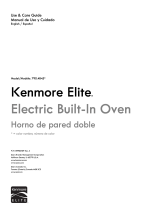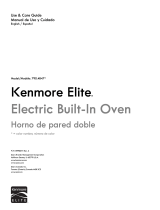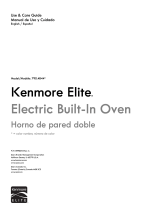IMPORTANT SAFETY INSTRUCTIONS
Read all instructions before using this appliance.
S
ave these instructions for future reference.
4
Wear proper apparel. Loose-
fitting or hanging garments should never be
worn while using this appliance. Do not let
clothing or other flammable materials come
into contact with hot surfaces.
Do not heat unopened food
containers. Build-up of pressure may cause
container to burst and result in injury.
When heating fat or grease,
watch it closely. Grease may catch fire if it
becomes too hot.
Do not use water or flour on
grease fires. Smother fire or flame or use dry
chemical or foam-type extinguisher. Cover
the fire with a pan lid or use baking soda.
Use dry potholders. Moist or
damp potholders on hot surfaces may result
in burns from steam. Do not let potholders
touch hot cooking areas. Do not use towels or
other bulky cloths.
I
mportant: Important Safety Notice - The
California Safe Drinking Water and Toxic
Enforcement Act requires the governor of
California to publish a list of substances
known to cause cancer, birth defects, or other
reproductive harms, and it requires busi-
nesses to warn customers of potential
exposures to such substances.
Read and follow the below
instructions and precautions for unpacking,
installing, and servicing your appliance:
•
Remove all tape and packaging before
using the oven. Destroy the carton and
plastic bags after unpacking the oven.
Never allow children to play with
packaging material.
• Remove the oven door from any unused
oven if it is to be stored or discarded.
•
Be sure to have an appropriate foam-type
fire extinguisher available, visible, and
easily located near the appliance.
• Proper installation—Be sure your
appliance is properly installed and
grounded by a qualified technician in
accordance with the National Electrical
Code ANSI/NFPA No. 70 latest edition
and local electrical code requirements. In
Canada, install in accordance with CSA
Standard C22.1, Canadian Electrical
code, Part 1, and local electrical code
requirements. Install only per installation
instructions provided in the literature
package for this oven.
•
User servicing—Do not repair or replace
any part of the appliance unless specifi-
cally recommended in the manuals. All
other servicing should be done only by a
qualified technician. This reduces the risk
of personal injury and damage to the
oven.
• Ask your dealer to recommend a qualified
technician and an authorized repair
service. Know how to disconnect the
power to the oven at the circuit breaker or
fuse box in case of an emergency.
•
Never modify or alter the construction of
an oven by removing the leveling legs,
panels, wire covers, anti-tip brackets/
screws, or any other part of the oven.
• Do not attempt to operate the oven
during a power failure. If the power fails,
always turn off the oven. If the oven is not
turned off and the power resumes, the
oven will begin to operate again. Once
the power resumes, reset the clock and
oven function.
•
Cold temperatures can damage the elec-
tronic control. When using this appliance
for the first time, or when the appliance
has not been used for an extended period
of time, be sure the appliance has been in
temperatures above 32ºF (0ºC) for at
least 3 hours before turning on the power
to the appliance.

























